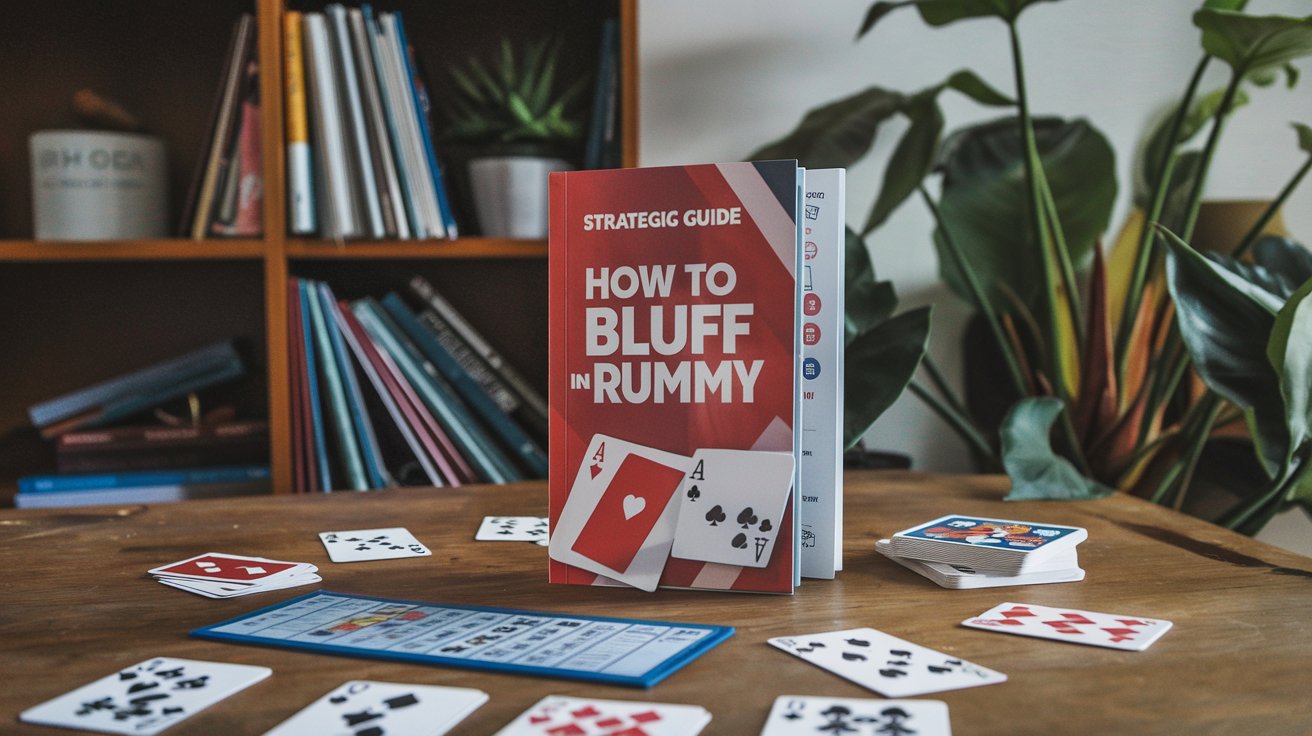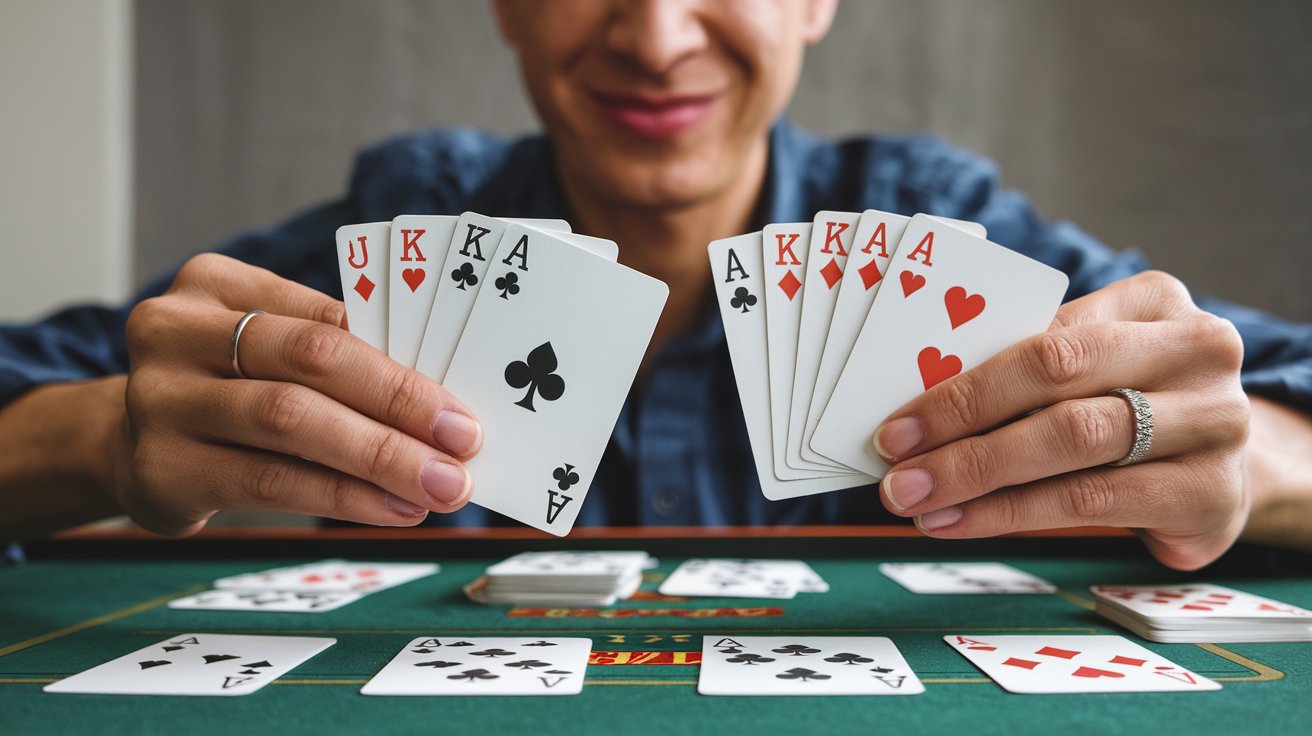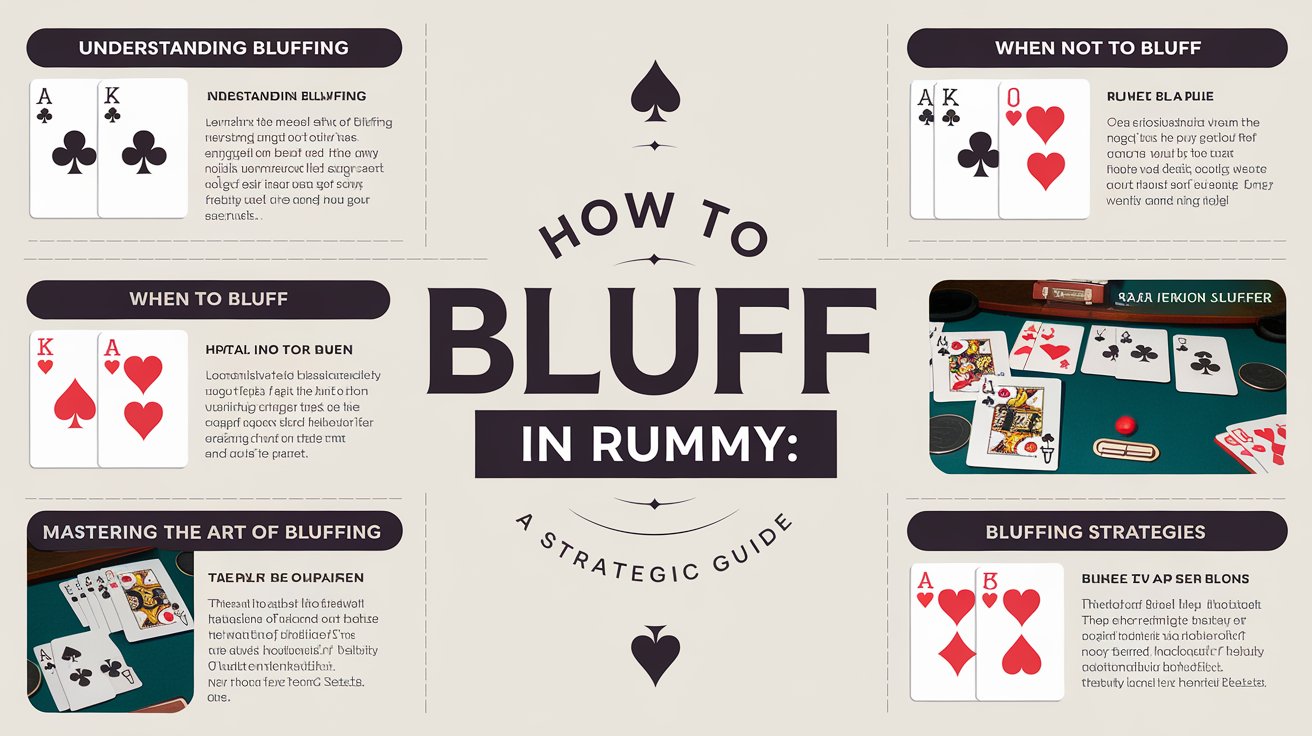Rummy is a classic card game that combines skill, strategy, and a little bit of luck. For beginners, the goal of Rummy is simple: form melds (sets or runs) using the cards you are dealt, and be the first to get rid of all your cards. However, as you advance in the game, you’ll realize that there’s more to Rummy than just the physical cards in front of you. A key aspect that can elevate your game is bluffing — an art that is just as important in card games as it is in poker.
Bluffing in Rummy can add a whole new layer of strategy to your gameplay. It allows you to mislead your opponents about your hand, making them think you’re closer to winning (or further away) than you actually are. When done correctly, bluffing can confuse your opponents, force mistakes, and give you the edge needed to secure a win.
In this strategic guide, we’ll walk you through how to bluff in Rummy, when to bluff, and the best techniques to execute a successful bluff. By the end of this blog, you’ll be equipped with the knowledge and confidence to bluff like a pro and increase your chances of winning.
What is Bluffing in Rummy?

In simple terms, bluffing in Rummy is when you intentionally mislead your opponents about the strength of your hand. You might discard cards that seem useful to you, pretend to work on a certain set or run, or even hold onto cards that seem unimportant but actually complete your hand.
Bluffing is not about lying; it’s about misdirection — making your opponents think you’re weaker (or stronger) than you are. The goal is to create doubt, force your opponents to misjudge your moves, and manipulate their decisions.
Bluffing in Rummy can give you the upper hand, especially in games where players pay attention to each other’s behavior. It requires skill, observation, and patience. While bluffing can be an effective tool, it’s essential to balance it with solid card play and strategy. Bluffing recklessly can backfire, but when used wisely, it can make all the difference.
Why is Bluffing Important in Rummy?
Bluffing is a critical aspect of advanced Rummy strategy because it adds unpredictability to the game. Here are a few reasons why bluffing can significantly enhance your chances of winning:
1. Confuse Your Opponents
Bluffing forces your opponents to second-guess their strategies. If they believe you are close to completing your hand, they may rush to discard high-value cards or reveal their own strategies, which can give you a chance to exploit their weaknesses.
2. Control the Pace of the Game
Bluffing can slow down the game by making your opponents hesitant. They may avoid drawing from the discard pile or think twice before making a move, which can help you stay in control and create opportunities for yourself.
3. Psychological Advantage
Rummy isn’t just about the cards — it’s about reading your opponents. Bluffing allows you to psychologically manipulate your opponents, making them feel uncertain about their decisions and actions. This mental pressure can result in them making mistakes or playing too cautiously.
4. Disrupt Your Opponents’ Strategy
If you successfully bluff, you can disrupt your opponent’s plans. They might be focused on trying to complete a particular suit or set, and when you discard cards that mislead them, they could waste valuable turns pursuing the wrong combination.
When to Bluff in Rummy

While bluffing can be a powerful tool, it’s important to know when to deploy it. Bluffing too often or at the wrong time can make you predictable and expose your strategy. Here are some situations when bluffing is most effective:
1. When You Have a Strong Hand but Need to Distract Your Opponents
If you have a powerful hand and are close to going out, bluffing can make your opponents believe you are still working on completing your melds. By discarding cards that don’t seem to fit with your strategy, you can confuse them into thinking you’re further away from winning than you actually are.
2. When You Are Behind in the Game
If you’re behind in terms of points or progress, bluffing can help you catch up. By misleading your opponents into thinking you are close to completing your hand, you can make them act prematurely, discarding cards that they might have otherwise held onto or ignored.
3. When You Have a Dead End Hand
If you’re stuck with a hand that seems unhelpful, bluffing can make it seem like you are working on something important. Discard cards that could mislead your opponents into thinking you’re close to completing a set or run, so they may discard cards that are actually beneficial to your hand.
4. When Your Opponents Are Playing Cautiously
If your opponents are playing cautiously, bluffing is an effective way to provoke action. You can create a sense of urgency by making them believe you’re about to finish your hand. This might prompt them to discard cards prematurely or change their strategy, giving you an opening to strike.
How to Bluff Successfully in Rummy: Techniques and Strategies

Bluffing in Rummy isn’t about making wild moves; it’s about being strategic with your discards and card choices. Here are some practical techniques to help you bluff successfully:
1. Discard Cards That Don’t Fit Your Hand
One of the simplest ways to bluff in Rummy is by discarding cards that you are actively working with, even if they are useful to you. By discarding a 5♠ when you already have 6♠ and 7♠, you may make your opponents believe you are not working on a run, even though you are.
Example:
Imagine you have 5♠, 6♠, and 7♠ in your hand, but you’re waiting for the 8♠ to complete the run. If you discard the 5♠ early in the game, your opponents might think you’re not aiming for a sequence in spades, leading them to avoid playing cards that could help you.
2. Use the Discard Pile as a Misdirection
The discard pile is one of the most important elements in Rummy. By carefully selecting which cards to pick up or discard, you can mislead your opponents about your hand. If they see you consistently picking up cards that seem irrelevant to your hand, they may be tricked into thinking you are playing a different strategy.
Example:
If you have cards that could help form a run but don’t want your opponents to catch on, you can pick up cards from the discard pile that seem to be useless in your hand, such as a King♣ when you’re not working on face cards. This could make your opponents think you’re focusing on something else, giving you more room to work on your real hand.
3. Pretend to Be Close to Going Out
If you’re nearing the end of the game, bluffing about being close to completing your hand can work to your advantage. By pretending that you only need one or two cards to finish your melds, you can encourage your opponents to discard cards they otherwise might have kept.
Example:
When you’re only a card or two away from completing your hand, make sure you discard cards that don’t help your hand but seem useful to other players. This can trick them into thinking you’re one move away from winning, prompting them to discard their valuable cards.
4. Throw Off Your Opponents with Unnecessary Discards
Another effective bluffing tactic is to discard cards that might appear essential for completing a set or run. By discarding cards that seem valuable to your strategy, you can make your opponents second-guess their next moves.
Example:
If you’re working on a set of 8s (e.g., 8♠ 8♦ 8♣) but still need one more 8, consider discarding a 7 of any suit. This could make your opponents think you’re not focused on completing a set and might cause them to discard cards that could be useful to you.
5. Bluffing with the Draw
Another way to confuse your opponents is by drawing cards you don’t need. When you draw a card that doesn’t fit into your hand, it can signal to your opponents that you are working toward completing a different set or run.
Example:
If you’re trying to form a run in spades (e.g., 4♠, 5♠, 6♠), but draw a 7♦, it might mislead your opponents into thinking you’re working on a set with 7s. This might prompt them to discard cards that complete your run, giving you the chance to finish it.
Key Mistakes to Avoid When Bluffing
While bluffing can be a powerful tool, it’s important to avoid certain mistakes that can expose your hand or make your bluff too obvious.
1. Bluffing Too Often
If you bluff every time, your opponents will quickly catch on to your tactics. Instead, use bluffing sparingly and strategically, as overuse can make you predictable.
2. Overplaying Your Hand
While it’s essential to mislead your opponents, overplaying your hand or going too far with the bluff can cause suspicion. If you discard cards that make no sense, your opponents may catch onto your strategy and stop trusting your moves.
3. Not Keeping Track of Your Own Moves
In the heat of a bluff, it’s easy to forget what you’ve already discarded or picked up. Always keep track of your discards and your opponents’ moves to avoid making a mistake that could give away your bluff.
Conclusion: Master the Art of Bluffing in Rummy
Bluffing is one of the most powerful strategies in Rummy. When executed correctly, it can confuse your opponents, disrupt their strategies, and create opportunities for you to win. However, bluffing should be used with caution and in the right moments, as overdoing it or using it too predictably can backfire.
By following the techniques outlined in this guide — discarding misleading cards, using the discard pile effectively, and pretending to be close to going out — you can strategically bluff your way to victory. Remember, Rummy is as much a mental game as it is a card game, and with practice, you’ll become adept at reading the game and bluffing like a pro.
So, the next time you sit down for a Rummy game, try incorporating these bluffing strategies to gain the upper hand and take your game to the next level!

Zareb Saleh is a journalist at Gulf Today and a ghostwriter for Gameoholic, specializing in gaming, technology, and digital culture. With a keen eye for industry trends, he delivers insightful stories that engage and inform readers.




